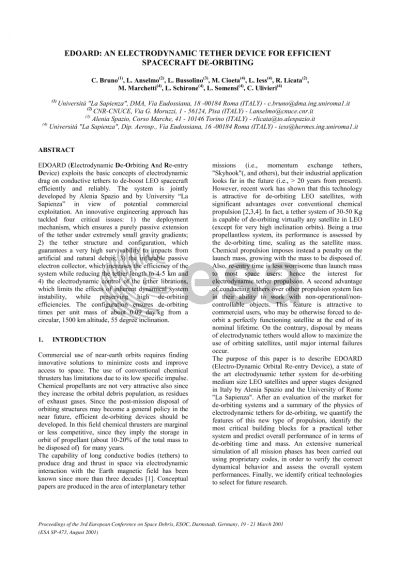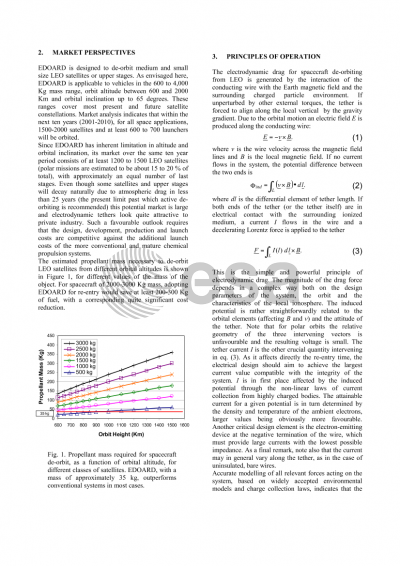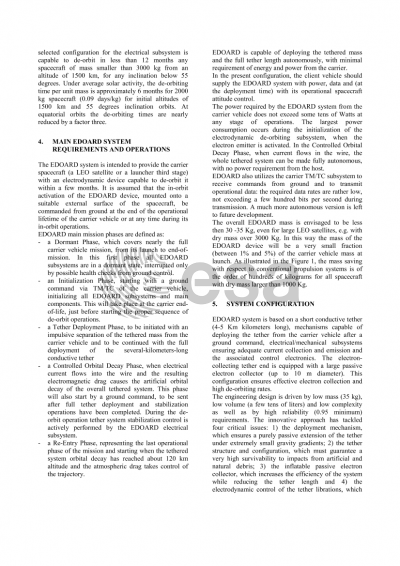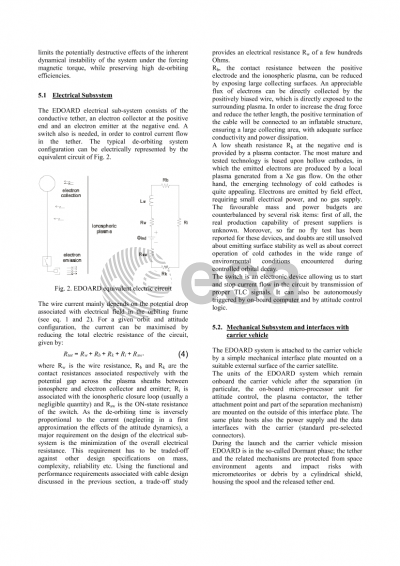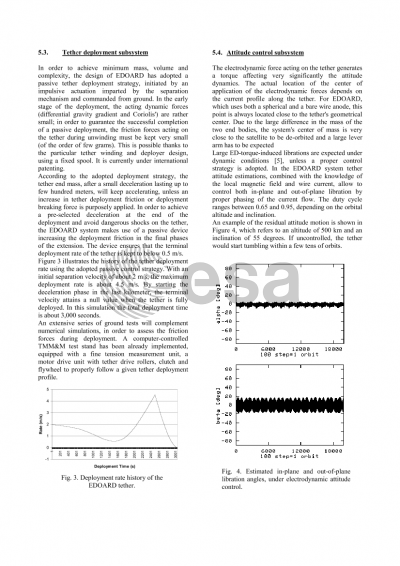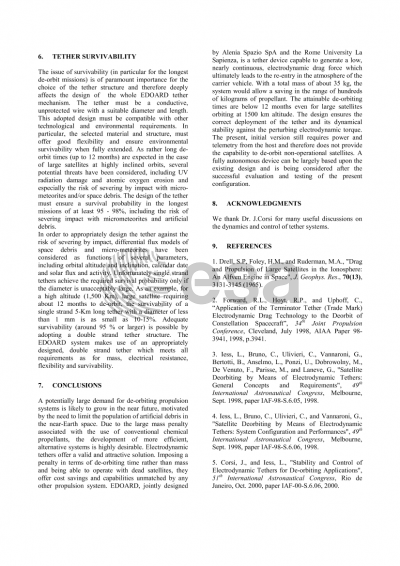Document details

Abstract
EDOARD (Electrodynamic De-Orbiting And Re-entry Device) exploits the basic concepts of electrodynamic drag on conductive tethers to de-boost LEO spacecraft efficiently and reliably. The system is jointly developed by Alenia Spazio and by University "La Sapienza" in view of potential commercial exploitation. An innovative engineering approach has tackled four critical issues: 1) the deployment mechanism, which ensures a purely passive extension of the tether under extremely small gravity gradients; 2) the tether structure and configuration, which guarantees a very high survivability to impacts from artificial and natural debris; 3) the inflatable passive electron collector, which increases the efficiency of the system while reducing the tether length to 4-5 km and 4) the electrodynamic control of the tether librations, which limits the effects of inherent dynamical system instability, while preserving high de-orbiting efficiencies. The configuration ensures de-orbiting times per unit mass of about 0.09 day/kg from a circular, 1500 km altitude, 55 degree inclination.
Preview
